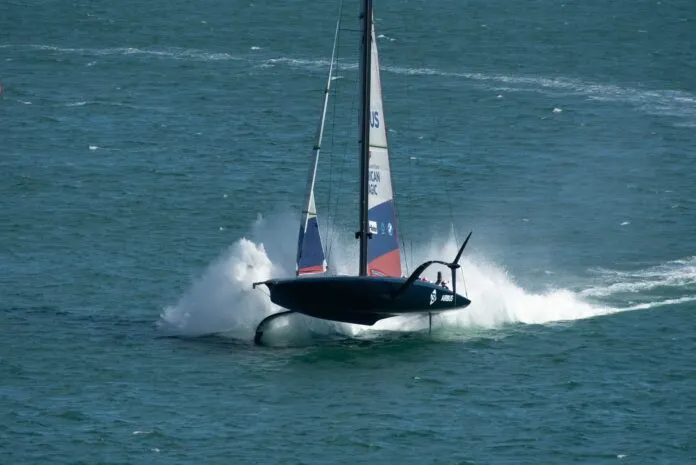
The America’s Cup Events (ACE) beginning 22nd August 2024, is a two month long plan consisting of the Louis Vuitton Challenger Cup, the Youth America’s Cup, the Women’s America’s Cup and climaxes with the Louis Vuitton 37th America’s Cup. These races lead up to the final race with the Cup’s Defender—Team New Zealand.
For the 37th time in 173 years, America’s Cup will be up for grabs this time in Marina Port Vell, Barcelona with a first-to-seven-wins match race series. This is one race which has constantly changed racing formats since inception and now has become an intense design race in the pursuit of aerodynamic efficiency and advance hydrodynamics.
This circuit was founded in 1851, under the burgee of the Royal Yacht Squadron (Cowes, UK). Now, the British team INEOS Britannia, under the guidance of the legendary Ben Ainslie, is the biggest challenger of the race. They have gone full throttle in order to potentially bring the trophy back home for the first time since the race started.
The current racing yachts are the foiling AC75s, which will hold only eight crew as compared to 11 in the previous race in 2021. They feature four dual crew on each side with the positions of trimmer, two cyclors and helm. The helms are constantly talking to each other on headphones, while mirroring controls between driving and flying. The Women’s and Youth America’s Cup events will similarly feature AC40 foiling mono-hulls, (which are smaller versions of the AC75) carrying only four crew members: two skippers and two sail trimmers. The current sailing crews include champion foilers, windsurfers, kite surfers, rowers and cyclists, with some transitioning directly from the Paris Olympic races to this circuit.
This second generation AC75 in flight is a breathtaking spectacle on the 1.5km by 3.5km racecourse area. They fly at speeds touching 50 knots in the 12-knot average Barcelonan breeze. Every four years the boats are redesigned for this team sport—it’s Grand Prix Match racing on steroids. Interestingly, cost cutting is what has led to an agreement between the America’s Cup and Sail GP to merge the design of their formula one yachts.
RACE SCHEDULE
| DATE: | FORMAT: | CLASS |
| August 29-September 8 | LV CUP – Double Round Robin | AC75 |
| September 14-19 | LV CUP – Semi Finals (Best of 9) | AC75 |
| September 17-26 | UniCredit Youth America’s Cup (Fleet Race) | AC40 |
| September 26-October 7 | LV CUP – Finals (Best of 13) | AC75 |
| October 5-13 | Puig Women’s America’s Cup (Fleet Race) | AC40 |
| October 12-21 | Match Race (Best of 13) 37th America’s Cup | AC75 |
THE HIGH TECH FRONTIER OF SAILING
While mastering the Moth class prepares you for handling the basics of the AC75s, running a team and developing high-tech boats—along with support crews, sailors and infrastructure—costs tens of millions. Each team has almost 100 people working non-stop, striving for top performance, with some of them focusing on mastering fluid dynamics, new wave models, foil development, etc. All the (top secret) team hangars in Barcelona are currently buzzing with excitement as they fine tune their tactics for the big Arena!
The world’s top-level naval architects, designers and engineers have crafted the best possible designs for their teams, while adhering to the one-boat build rule. Sailors in the cockpit interface with the boat’s mechanical and mechatronic systems, driven by their passion for the sea wind while pushing the limits of these flying machines. Electronics onboard include: cue information systems, control systems, sensor systems, and 3D-printed sails with electronically operated hydraulic controls and autopilot sailing instruments. The carbon F1-style steering wheel features multi-colored, multi-function buttons for trimming sails, jib, foils and mast rotation. The flight controller manages the boat like flying an aircraft.
Team partnerships with sports engineering companies like Red Bull Advanced Technologies and Mercedes F1 Applied Science elevate this competition to the pinnacle of Grand Prix racing. This collaboration brings a level of sophistication that rivals even the space race.
Written somewhere on a boat in Malta.


































pretty cool stuff